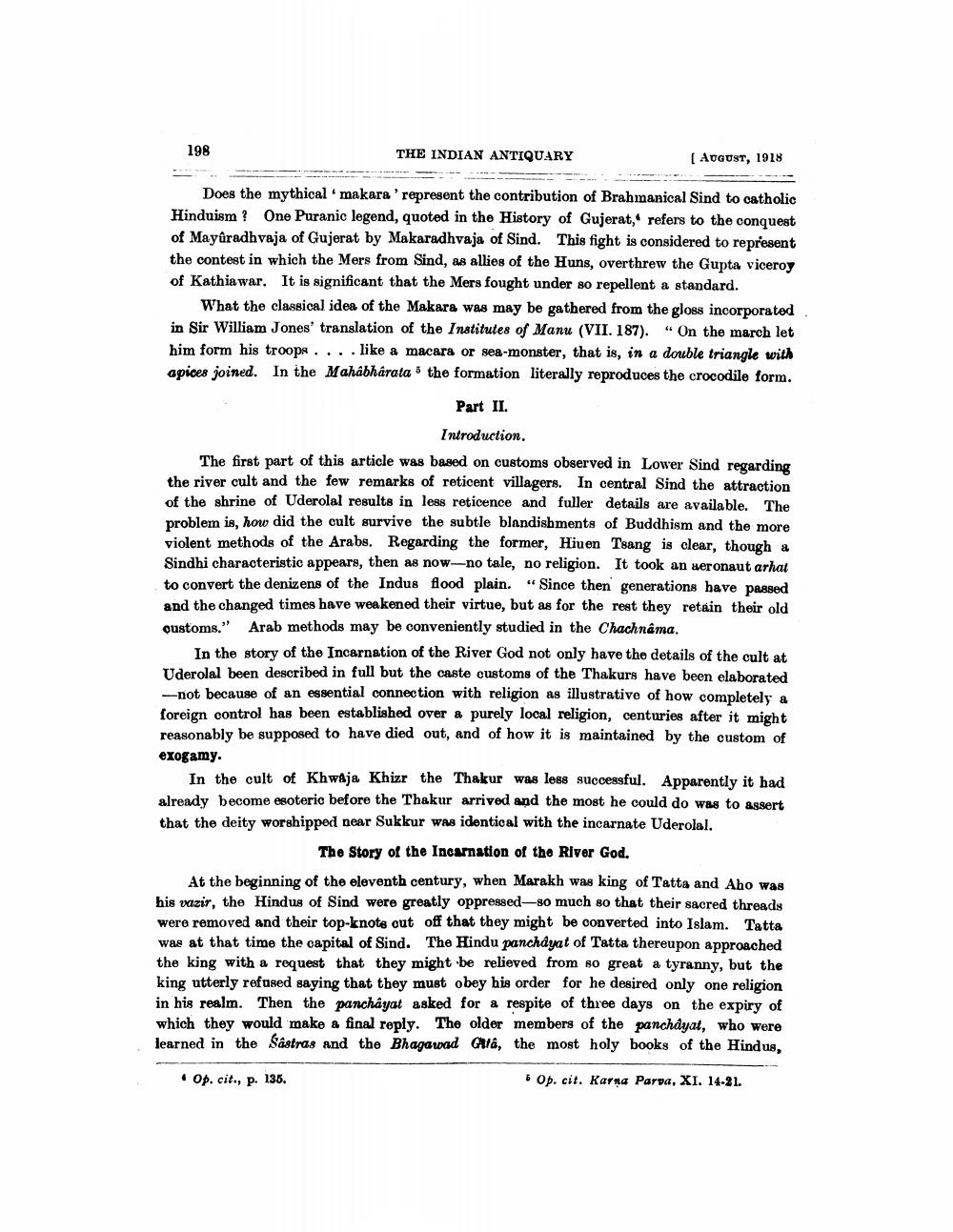________________
198
THE INDIAN ANTIQUARY
( AUGUST, 1918
Does the mythical makara 'represent the contribution of Brahmanical Sind to catholic Hinduism? One Puranic legend, quoted in the History of Gujerat, refers to the conquest of Mavûradhvaja of Gujerat by Makaradhvaja of Sind. This fight is considered to represent the contest in which the Mers from Sind, as allies of the Huns, overthrew the Gupta viceroy of Kathiawar. It is significant that the Mers fought under so repellent a standard.
What the classical idea of the Makara was may be gathered from the gloss incorporated in Sir William Jones' translation of the Institutes of Manu (VII. 187). "On the march let him form his troops . . . . like a macara or sea-monster, that is, in a double triangle with apices joined. In the Mahabharata . the formation literally reproduces the crocodile form.
Part II
Introduction. The first part of this article was based on customs observed in Lower Sind regarding the river cult and the few remarks of reticent villagers. In central Sind the attraction of the shrine of Uderolal results in less reticence and fuller details are available. The problem is, how did the cult survive the subtle blandishments of Buddhism and the more violent methods of the Arabs. Regarding the former, Hiuen Tsang is clear, though a Sindhi characteristic appears, then as now-no tale, no religion. It took an aeronaut arhat to convert the denizens of the Indus flood plain. "Since then generations have passed and the changed times have weakened their virtue, but as for the rest they retain their old oustoms." Arab methods may be conveniently studied in the Chachnama,
In the story of the Incarnation of the River God not only have the details of the cult at Uderolal been described in full but the caste customs of the Thakurs have been elaborated - not because of an essential connection with religion as illustrative of how completely a foreign control has been established over a purely local religion, centuries after it might reasonably be supposed to have died out, and of how it is maintained by the custom of exogamy.
In the cult of Khwaja Khizr the Thakur was less successful. Apparently it had already become esoteric before the Thakur arrived and the most he could do was to assert that the deity worshipped near Sukkur was identical with the incarnate Uderolal.
The Story of the Incarnation of the River God. At the beginning of the eleventh century, when Marakh was king of Tatta and Aho was his vazir, the Hindus of Sind were greatly oppressed-80 much so that their sacred threads were removed and their top-knots cut off that they might be converted into Islam. Tatta was at that time the capital of Sind. The Hindu panchdyat of Tatta thereupon approached the king with a request that they might be relieved from so great a tyranny, but the king utterly refused saying that they must obey his order for he desired only one religion in his realm. Then the panchayat asked for a respite of three days on the expiry of which they would make a final reply. The older members of the panchdyat, who were learned in the Sastras and the Bhagawad Gala, the most holy books of the Hindus,
Op. cit., p. 135.
• Op. cit. Karna Parpa, XI. 14-21.




